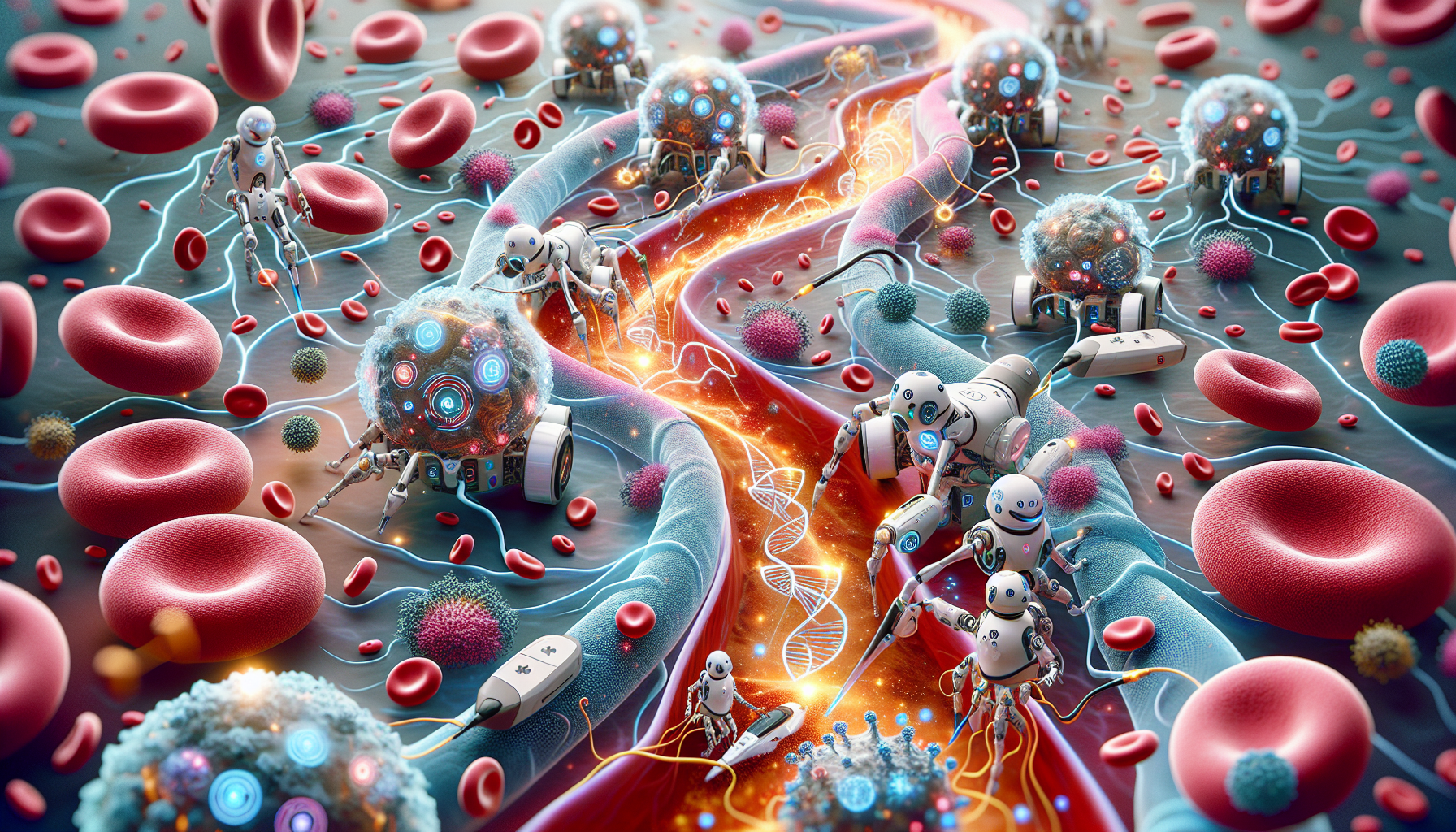Revolutionary Nanotechnology Breakthrough in Cancer Treatment
Revolutionary Nanotechnology Breakthrough in Cancer Treatment
In a groundbreaking development, scientists at the Massachusetts Institute of Technology (MIT) have announced a major breakthrough in cancer treatment using nanotechnology. The team has successfully developed a new type of nanoparticle that can target and destroy cancer cells with unprecedented precision. This revolutionary discovery could potentially change the face of cancer treatment as we know it.
 The nanoparticles, named ‘NanoDarts’, are designed to specifically target cancer cells, leaving healthy cells untouched. This is a significant advancement over traditional cancer treatments like chemotherapy, which often harm healthy cells in the process of killing cancer cells. The NanoDarts are engineered to recognize and bind to proteins that are unique to cancer cells, ensuring that only the diseased cells are targeted.
The nanoparticles, named ‘NanoDarts’, are designed to specifically target cancer cells, leaving healthy cells untouched. This is a significant advancement over traditional cancer treatments like chemotherapy, which often harm healthy cells in the process of killing cancer cells. The NanoDarts are engineered to recognize and bind to proteins that are unique to cancer cells, ensuring that only the diseased cells are targeted.
Once the NanoDarts bind to the cancer cells, they release a payload of cancer-killing drugs directly into the cell. This targeted approach not only increases the effectiveness of the treatment but also significantly reduces the side effects typically associated with cancer treatments. The researchers believe that this could lead to more effective, less harmful cancer treatments in the future.
The team at MIT has been working on this project for several years, and the results of their latest tests have exceeded their expectations. In laboratory tests, the NanoDarts were able to effectively kill cancer cells while leaving healthy cells unharmed. The team is now preparing for clinical trials, which they hope will confirm the effectiveness of their treatment in humans.
This breakthrough in nanotechnology has the potential to revolutionize cancer treatment, offering a more effective and less harmful alternative to current methods. While there is still much work to be done, the team at MIT is optimistic about the future of their research and the potential impact it could have on millions of cancer patients worldwide.
Sources:
The information for this article was gathered from official press releases and scientific publications from the Massachusetts Institute of Technology. Further details can be found in the journal Nature Nanotechnology, where the team’s research was recently published.